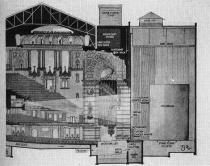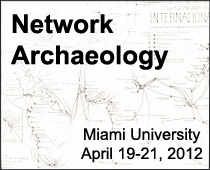Posts Tagged: materiality

Becoming Network. Henry C. Beck, Material Culture and the London Tube Map of 1933
Presentation by Sebastian Gießmann (Internet Policy Advisor to the Greens in the German Bundestag). What makes a material network a navigable social space? In my contribution, I will try to demonstrate that the relation of built structures and their media

Becoming Network. Henry C. Beck, Material Culture and the London Tube Map of 1933
Presentation by Sebastian Gießmann (Internet Policy Advisor to the Greens in the German Bundestag). What makes a material network a navigable social space? In my contribution, I will try to demonstrate that the relation of built structures and their media

Digging Through Archives and Dirt: Entangling Media Archaeology, Archaeology Proper, and Architectural History
Presentation by Shannon Mattern (The New School). In the introduction to their new media archaeology anthology, Erkki Huhtamo and Jussi Parikka propose that “[m]edia archaeology should not be confused with archaeology as a discipline. When media archaeologists claim that they

Digging Through Archives and Dirt: Entangling Media Archaeology, Archaeology Proper, and Architectural History
Presentation by Shannon Mattern (The New School). In the introduction to their new media archaeology anthology, Erkki Huhtamo and Jussi Parikka propose that “[m]edia archaeology should not be confused with archaeology as a discipline. When media archaeologists claim that they

Half-Inch Revolution: Guerrilla Television’s Tape Networks
Presentation by Kris Paulsen (The Ohio State University). The Rays, a 1970 videotape by the Raindance Corporation, shows something curious: As the three collaborators record each other, rhythmic waves flow across the screen. In each wave there are bits of

Half-Inch Revolution: Guerrilla Television’s Tape Networks
Presentation by Kris Paulsen (The Ohio State University). The Rays, a 1970 videotape by the Raindance Corporation, shows something curious: As the three collaborators record each other, rhythmic waves flow across the screen. In each wave there are bits of

Why is “Ether” in the “Ethernet”?
Presentation by Peter Schaefer (Marymount Manhattan College). This paper uses a comparative analysis of published appearances of “ether” by computer scientists in the 1970s and physicists in the 1880s. In 1973, at the Xerox Palo Alto Research Center (PARC), computer

Why is “Ether” in the “Ethernet”?
Presentation by Peter Schaefer (Marymount Manhattan College). This paper uses a comparative analysis of published appearances of “ether” by computer scientists in the 1970s and physicists in the 1880s. In 1973, at the Xerox Palo Alto Research Center (PARC), computer


